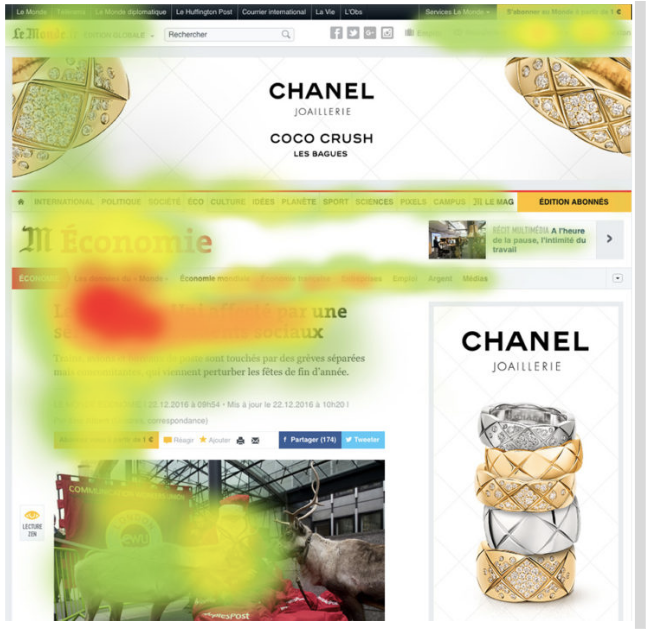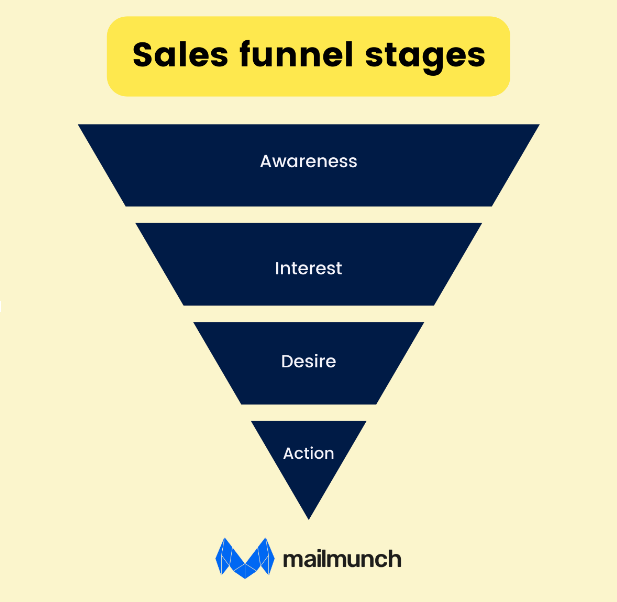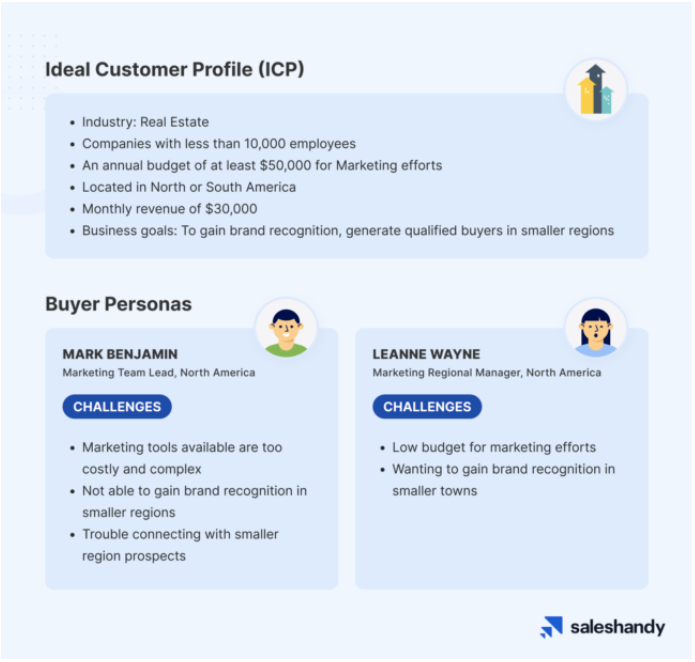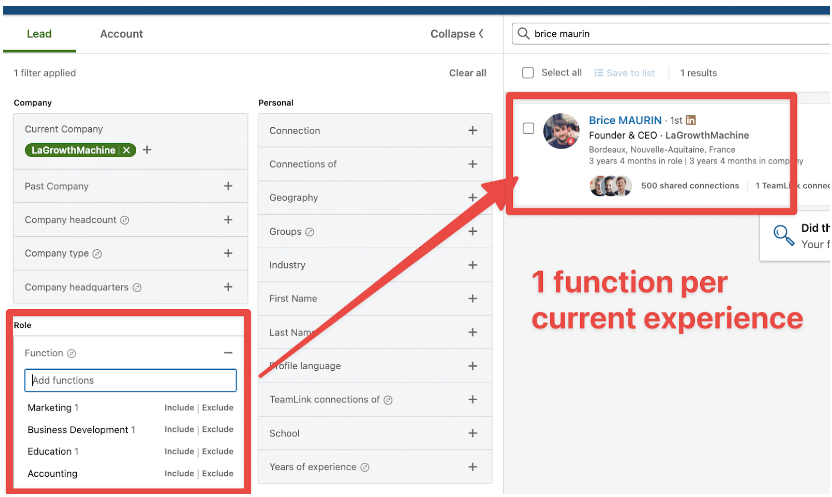Inbound vs. outbound is one of the biggest questions that may arise when starting up. When you have limited resources and no clue about what will help grow your startup, which one do you pick?
Full disclosure—the answer to this question is not as straightforward as you may expect. There are a lot of factors that come into play. However, this guide will help you make an informed decision about what would be the best strategy for your startup.
In this post, you’ll get insights into the pros and cons of inbound and outbound marketing, the difference between them, and when you should use either. So, let’s dive in.
New $10K grants are available, plus free courses. Verizon Small Business Digital Ready.
What is Outbound Marketing?
Outbound marketing refers to the type of marketing where you reach out to your target audience through various channels.
Outbound marketing started way back in the day with TV commercials, magazine ads, and banner ads. It still plays an important role by pivoting more towards online strategies such as cold emailing and social media outreach.
Benefits of Outbound Marketing
It goes without saying that there are lots of benefits to outbound marketing:
- Quick results – When done right, outreach marketing can yield results much faster than inbound marketing. Time to set up and get results is comparatively low.
- Reach a wider audience – With outbound, you can reach audiences still in the problem-unaware or the problem-aware stages.
- Lots of channels to experiment – Be it cold calls, emails, LinkedIn, or Twitter, you can experiment with multiple outbound marketing channels and track the ROI from each of them.
- Tools for personalization – With online outreach, it is possible to overcome the biggest drawbacks of banner ads and TV commercials. Tools have now made it possible to personalize your outreach messages and automate the entire process.
Shortcomings of Outbound Marketing
Outbound marketing comes with its fair share of cons:
- Interruptive – Outbound interrupts the users in the middle of something else, which disrupts the user experience. The interaction starts on a negative note which may not always turn out well.
- Banner blindness and ad blockers – Since outbound is interruptive, it leads to banner blindness, and users resort to practices like ad blocking. This may make it difficult for startups to reach their audiences.
- Highly competitive – Since outbound is quick and easy, people’s emails and social media feeds are oversaturated with pitches from hundreds of brands. So, you need to put in a lot of effort to get the users’ attention.
- Can be expensive – With outbound marketing, costs can quickly add up to a huge amount while not yielding the optimum results. This is mostly because social media ads and outreach tools are getting expensive by the day.
An example of banner blindness. Source
Examples of Outbound Marketing for Startups
Some classic examples of outbound marketing are:
- Cold email outreach to generate leads
- Display ads or banner ads on third-party websites
- Cold calls where you pitch your sales proposal
- Social media ads such as Instagram ads, Facebook ads, LinkedIn ads, etc.
- Social media outreach or direct messaging mainly using platforms like LinkedIn and Twitter
- Trade shows
- Billboards
- Traditional media such as TV, magazine, radio, etc.
What is Inbound Marketing?
Inbound marketing refers to strategies where you attract your ideal customer persona to your brand/products instead of you directly reaching out to them.
Inbound marketing is usually done by setting up a website and social media channels that create brand awareness and attract prospects. The idea is to bring potential customers into your inbound marketing path.
The more people you attract to the top of your sales funnel with effective inbound marketing tactics, the more the number of customers who make it to the bottom and make a purchase.
Benefits of Inbound Marketing
The benefits of inbound marketing outweigh those of outbound marketing. Here are a few:
- High-quality leads – Prospects who reach you via your inbound marketing path have higher purchase intent and more easily qualify as a lead.
- Attract global customers – With inbound marketing, it is easy to potentially reach a massive global audience sitting at one corner of the world. With the right messaging and products, you can attract customers from across the globe.
- Consent-based marketing – Unlike the case of outbound, inbound marketing is not interruptive as they willingly consume your content.
- Higher retention rates – With inbound, you only attract high-quality leads who are genuinely interested in your products or services. Therefore, retaining inbound customers is much easier compared to outbound leads.
- Automation and innovation – A significant part of your inbound marketing efforts can be automated. For example, you can automate social media post scheduling, set up automated responses for any inbound inquiries.
Today you can even let AI help you with inbound marketing.
Shortcomings of Inbound Marketing
There’s a flip side to inbound marketing as well:
- Takes time – One of the biggest challenges with inbound marketing is that it may take a significant amount of time before you start attracting prospective customers. This contrasts with outbound strategies, where you can expect almost immediate results.
- Tedious and challenging – Inbound marketing strategies such as blogging, SEO, and creating content for social media take lots of effort. They can be challenging especially when you cannot expect to see instant results.
- Investment in tools – Inbound requires you to invest in tools such as website builders, apps for social media posting, email marketing tools, etc.
- Lesser control – In the case of inbound marketing, you push content out into the world and pray for your prospects to read it and come to you. So, things are not in your control.
Examples of Inbound Marketing for Startups
Some classic examples of inbound marketing are:
- Website content such as blog posts, infographics, videos, whitepapers, etc.
- Social media posts
- Podcasts that aim to create brand awareness and generate leads
- Email newsletters where people have given their consent to receive your emails
- Search engine optimization or SEO, where you optimize your content for certain keywords that your prospects are likely to search for.
- Influencer marketing
- Chatbot platforms installed on your website or social media DMs
- Online events such as webinars
- Paid search ads on channels like LinkedIn and Facebook.
If you find that your outbound or inbound marketing strategies are not yielding effective results, it’s a good idea to start reevaluating your ICP. This is because both inbound and outbound efforts will utterly fail if you are not hitting the bullseye of your target audience’s pain points.
Imagine spending your precious time and resources on creating SEO blog posts that do not speak to the exact pain points of your potential customers. Or reaching out to hundreds of people via cold emails who cannot afford your products/services at the moment.
Instead of just estimating, rather use tools like Facebook’s audience manager (for B2C) or LinkedIn’s sales navigator’s search filters (for B2B) to get real-time data about your audience and their characteristics.
3. Experiment with Different Inbound and Outbound Channels
Just because certain marketing channels work for your competitors doesn’t mean they will work for you. Every brand is unique, with a distinctive value proposition. Hence it is important to take a data-driven approach while picking your marketing channels.
Experimenting with different inbound and outbound channels can be a game-changer for your startup’s growth. You may find that cold calling works great for your potential customers, contrary to what you had expected earlier.
Or, you may find that investing your resources in Instagram growth is yielding much better ROI than cold email outreach. You may never gather this data until you experiment. For extra help in this aspect, you can consider seeking assistance from startup coaches.
4. Repurpose Content between Marketing Channels
Another great tip here would be to creatively repurpose content between your inbound and outbound marketing channels. Maintaining multiple marketing channels can take a massive effort, but repurposing can take some load off and yield better results.
Content that is a hit in your inbound marketing campaigns can be used in your outbound outreach. For instance, if a certain lead magnet on your website attracts lots of high-quality leads into your funnel, you can leverage the same in your cold outreach campaigns.
5. Personalize the Multi-Channel Customer Journey
Customers today move between several media back and forth before they decide on a brand or a product. Whether it started with LinkedIn outreach, then followed up with email campaigns, or a visit to your website from a social channel: It’s important that all your information is coherent, and that the customer journey adapts to the customer and not the other way around.
For example, you can engage a customer who is visiting your website multiple times with personalization using data you have gathered from the previous touchpoints. This saves the customer valuable time and at the same time, you leave a good emotional impression.
6. Measure Campaign Results and Pivot
As a startup, it’s crucial for you to allocate your resources effectively to the best marketing channels. This is why setting KPIs for your campaigns, measuring them, and pivoting is a key part of the inbound/outbound puzzle.
You can use a CRM for your startup that will help track all your inbound and outbound campaign metrics in a single place. You can keep track of metrics such as lead conversion rate, customer acquisition cost (CAC), website traffic, landing page conversions, etc.
Based on these performance metrics, you can make changes to marketing campaigns. Changes can be as simple as making small changes to your content marketing strategy to something as big as getting rid of a marketing channel.
Conclusion
There goes a comprehensive guide on everything you need to know about inbound vs. outbound marketing for your startup.
After going through this post, not only you will be able to choose different inbound and outbound marketing channels for your business. But you’ll also be able to implement strategies that will help both work hand-in-hand, ultimately yielding the best ROI.










